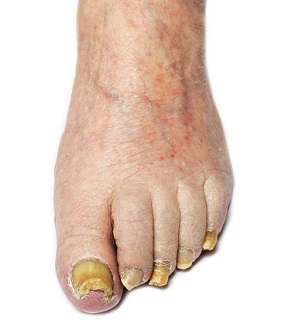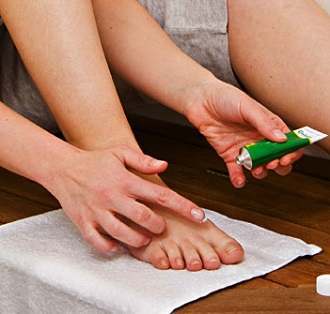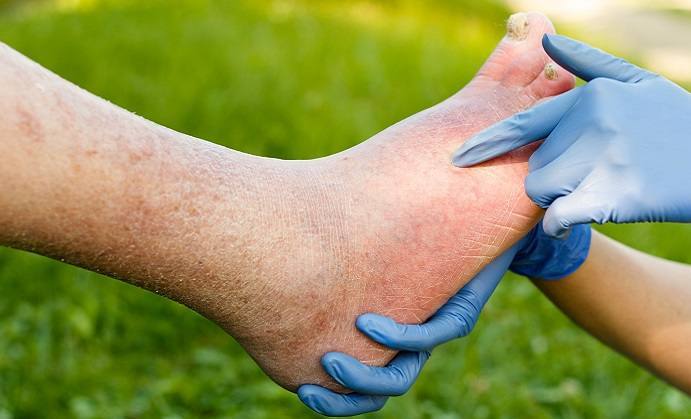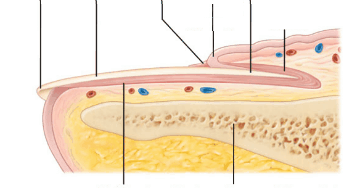Nail Psoriasis and Nail fungus may be similar but they are definitely not the same! They are both similar owing to the fact that both have similar symptoms. Though the symptoms are similar, their treatments vastly differ. There are certain clear and distinct symptoms for both that differentiate one from the other which most people are unaware of. Instead of taking advice from a medical practitioner, people make assumptions of their own by reading pages and pages over the internet. Expert advice for identification of the disease is extremely important for cases of this kind.
A study states that most people who have nail psoriasis also have skin psoriasis.
Symptoms for nail psoriasis and nail fungus
 Onychomycosis commonly occurs on toe nails and is a fungal infection. The toe nails become brittle get damaged along with a formation of scaling.
Onychomycosis commonly occurs on toe nails and is a fungal infection. The toe nails become brittle get damaged along with a formation of scaling.
Psoriasis also appears the same except it includes the nail to look pitted. Though both the conditions occur on either the finger or the toe nails, onychomycosis affects only the toes since the fungus requires a damp environment in order to develop.
Onychomycosis causes nail dystrophy or damage which makes the nail brittle and white which is accompanied by pain and discomfort while psoriasis causes discoloration of the nail and their occurrence resembles oil spots.
Another distinct set of symptoms is that people who have psoriasis of the nail also suffer from skin psoriasis on various other body parts causing silver scaly skin whereas nail fungus may spread to body parts like the groin or the scalp.
Treatment for nail psoriasis and nail fungus
There are a few treatments for nail fungus like laser treatment which is efficient but quite expensive. The guarantee that it may not reoccur with a laser treatment is uncertain as various studies based on this are still in progress. Pills are available for treatment of this condition but it needs to be taken over a very long period and like all pills it has the risk of side effects when taken for too long. Lamisil is one such pill that is used for treatment of nail fungus.
 Ointments are available which are preferably used owing to the low cost and the easy use. It is essential not to use a single ointment continuously as this may cause the fungus to become resistant to the medicine. By using multiple effective ointments, the risk of resistance is eliminated. Most antifungal ointments contain an enhancer which aids the medicine in penetrating through the nail to contact the skin that is affected. For instance, antifungal medicine Fungicillin contains Keratrate which helps in reaching the infected area. In the absence of such enhancers, the ointment may not act on the affected area and will instead only be absorbed by the surrounding skin which will finally have no effect on the infected nail.
Ointments are available which are preferably used owing to the low cost and the easy use. It is essential not to use a single ointment continuously as this may cause the fungus to become resistant to the medicine. By using multiple effective ointments, the risk of resistance is eliminated. Most antifungal ointments contain an enhancer which aids the medicine in penetrating through the nail to contact the skin that is affected. For instance, antifungal medicine Fungicillin contains Keratrate which helps in reaching the infected area. In the absence of such enhancers, the ointment may not act on the affected area and will instead only be absorbed by the surrounding skin which will finally have no effect on the infected nail.
While fungus can be treated, nail psoriasis has no particular treatment. Treatments are available to only improve appearance of the nail by using certain ointments that contain vitamin A and vitamin D or by injecting the nail bed with steroids.
For extreme cases, the nail may be painlessly removed chemically or surgically. It can be surgically done using an anesthetic or chemically done using a lotion that helps it to fall off in a week’s time by itself with no bleeding. Finally, there is also PUVA therapy which involves exposure to UVA light after taking Psoralen, a photosensitizing agent found in plants, which is taken orally or applied to sensitize the skin before being exposed to the ultraviolet light. This treatment has various other complications as some patients’ skin begin to itch due to the effect of psoralen and the exposure to UV light may also cause genome instability in some cases and thus is quite a risky option.
Do you want to find an effective Nail Fungus treatment? Check out our top rated Nail Fungus products











